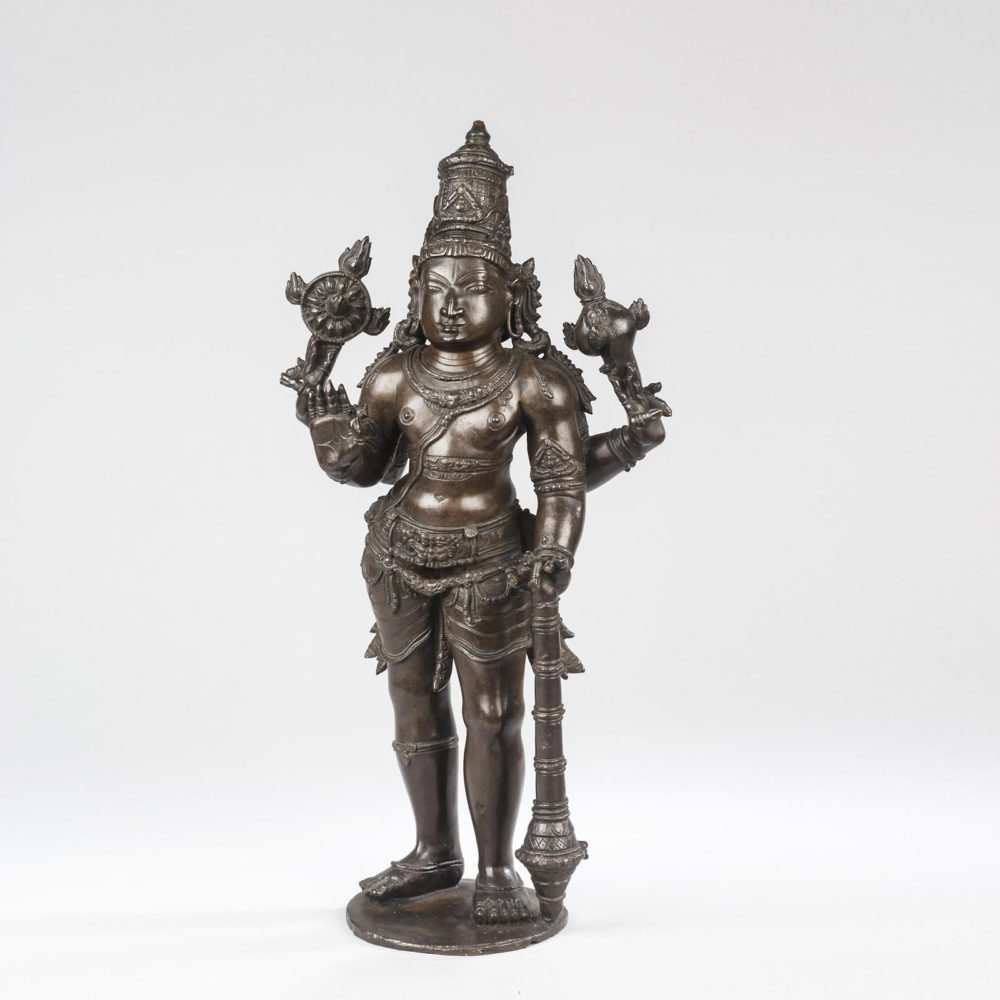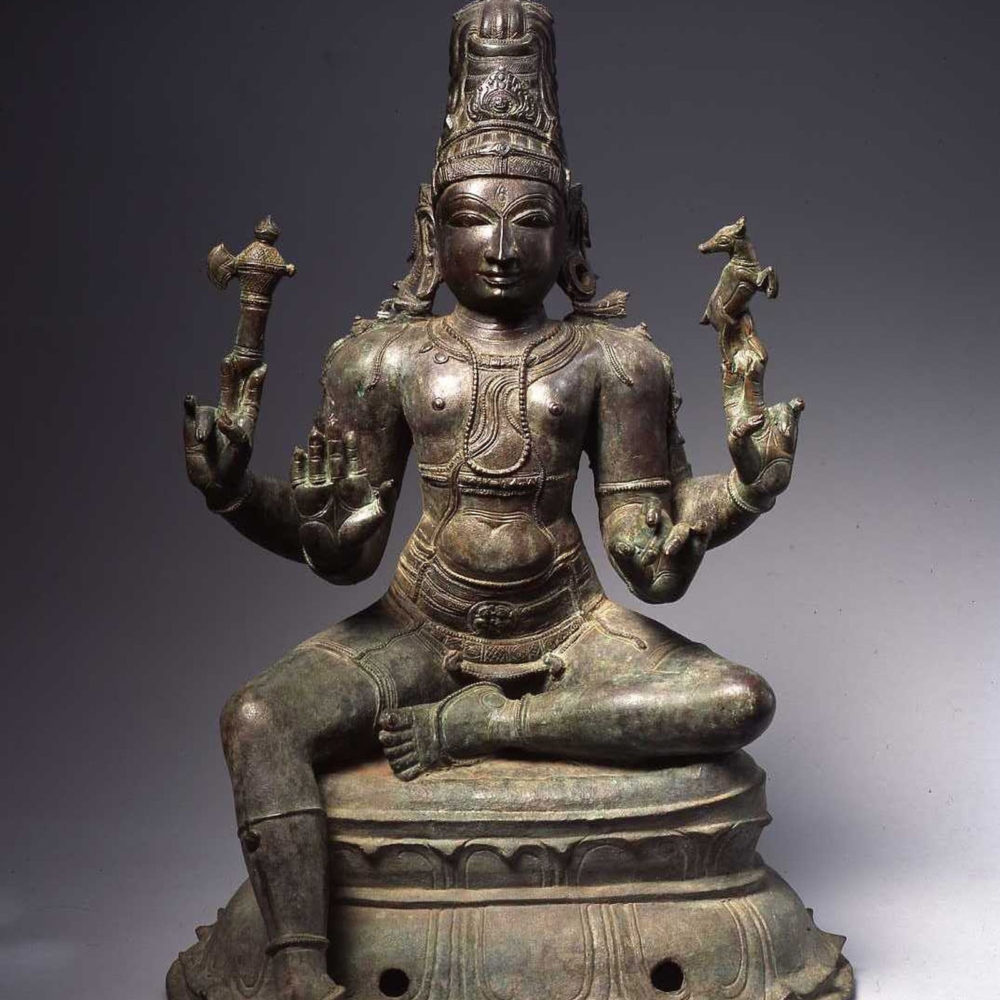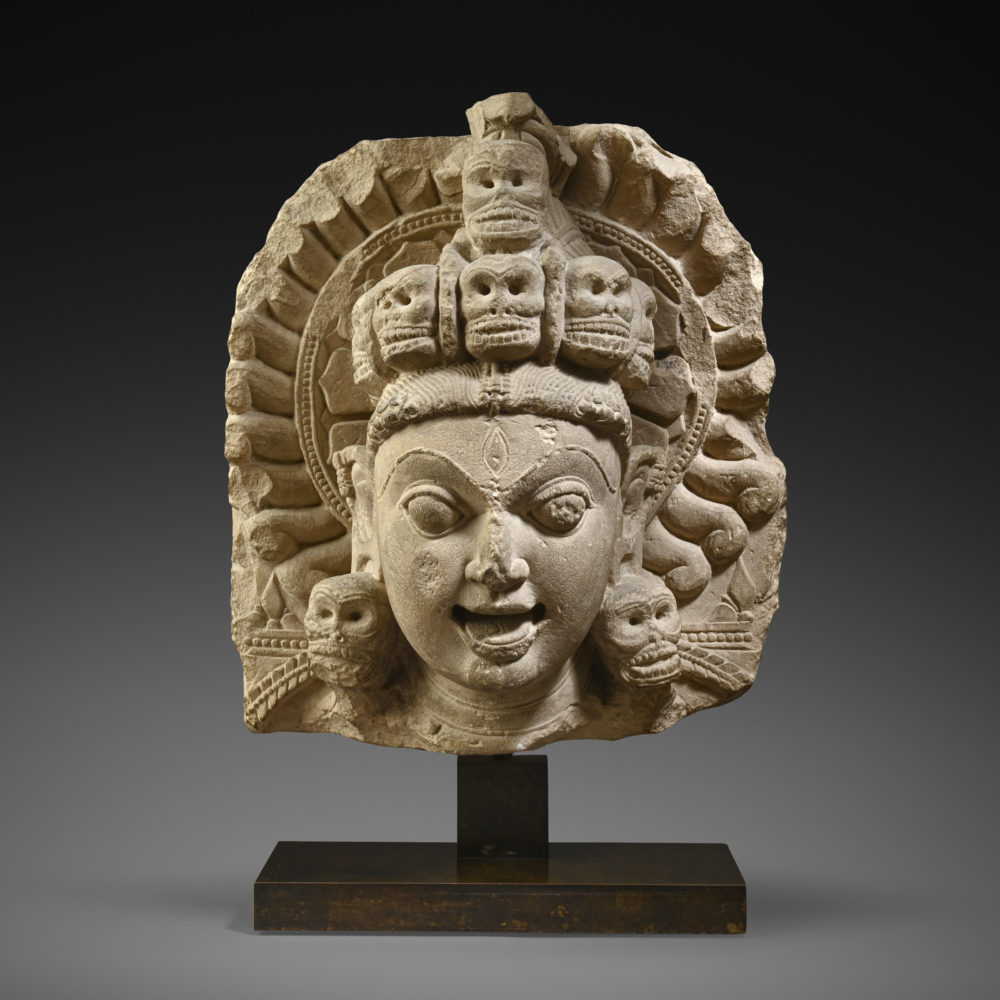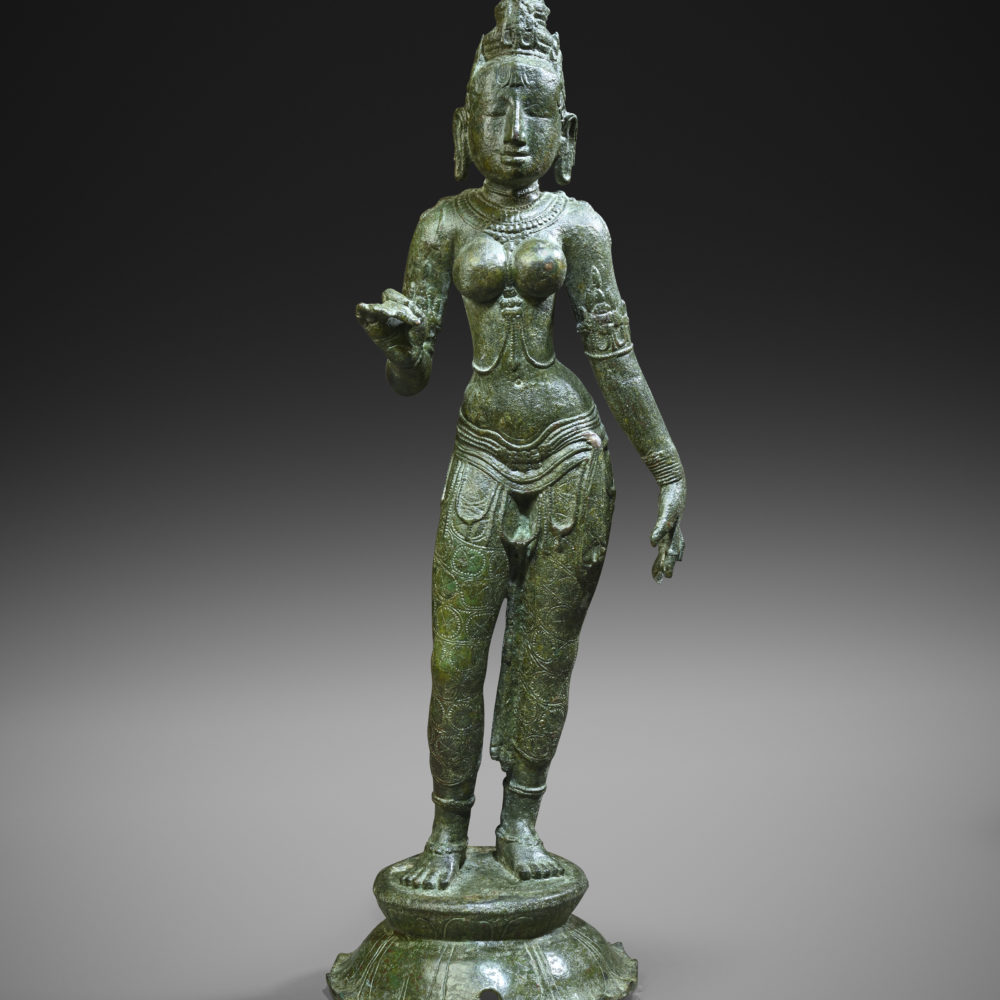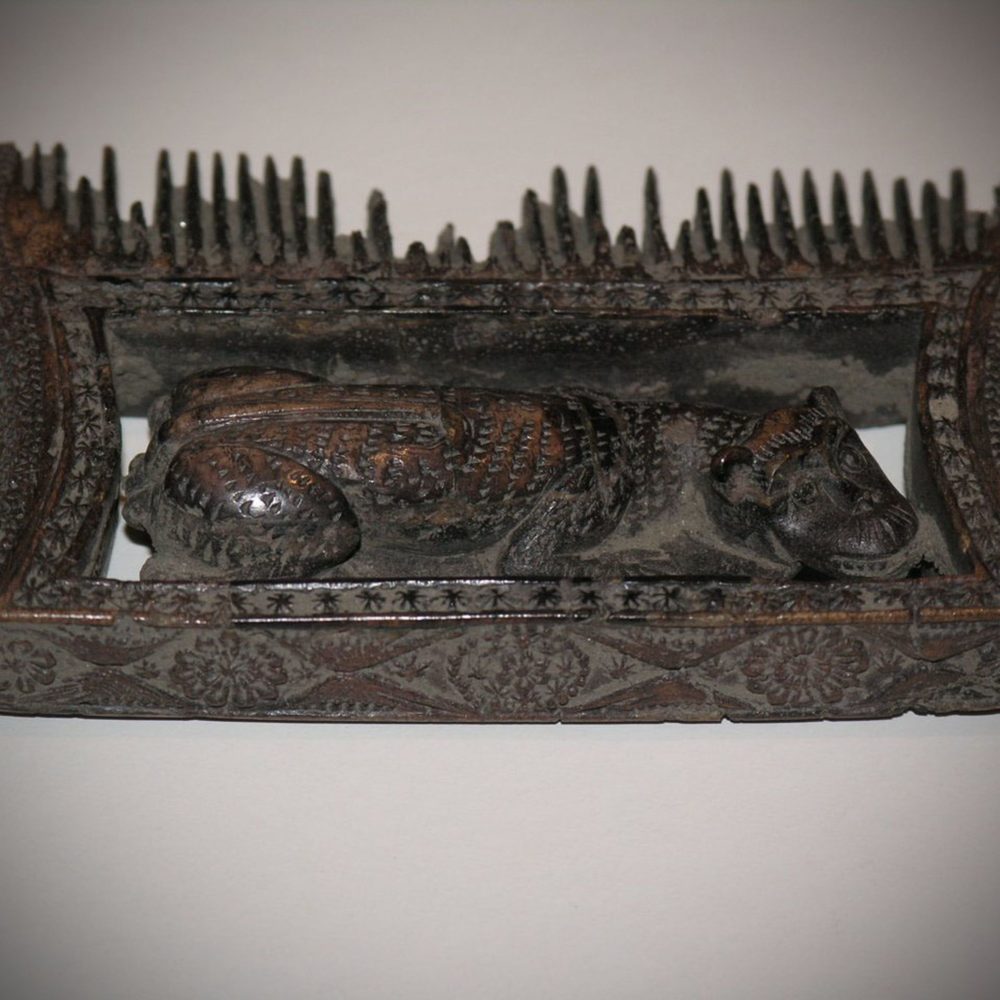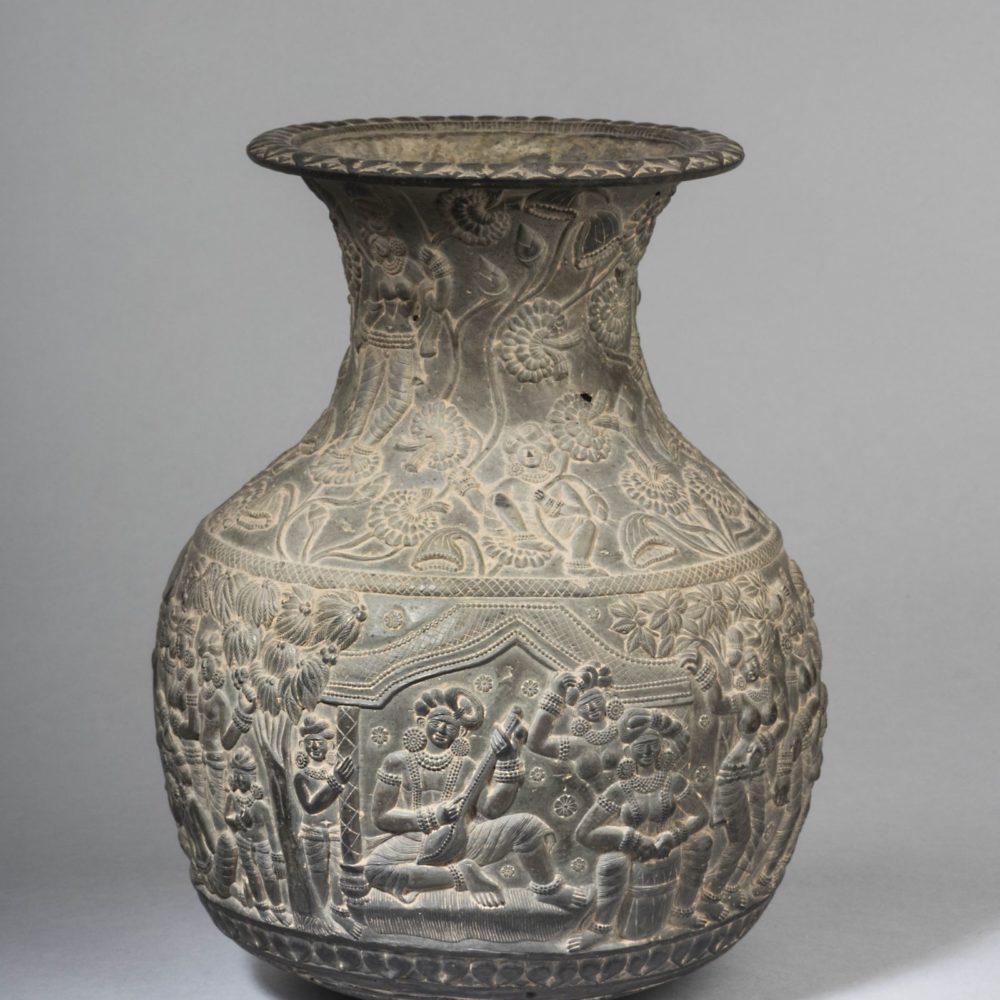A red mottled sandstone head of a Jina
Kushana period, Mathura 2nd century A D. India.
Height: 34 cm
Finely carved in red mottled sandstone, this Jina head has an ovoid face with a sensuous mouth and fleshy lower lip that extends upwards at each side thinning into a gentle smile. The almond-shaped eyes are bulging, with eyelids tilted slightly down at the sides below graceful arched brows. Above the damaged nose is a pronounced circular hollow urna. The hair is arranged in horizontal rows detailed with semi-circular lines to create a wavy impression, forming a neat hairline high on the forehead. The hair rows run behind the elongated ears, with the top of the head towards the front missing its spiral bun. The back of the head is unfinished suggesting that it was once attached to a mandala or background.
Situated at the conjunction of ancient trade routes through Central India, for centuries Mathura had been a prominent economic, religious, and cultural centre. This city fostered the Mathura School, a distinct artistic style based on indigenous Indian traditions. During the 2nd and 3rd centuries Mathura became the capital of the Kushan Empire. The Mathura sculptural style further flourished and developed toward a more realistic treatment, which is evidenced in this Jina head. The depiction of this Jina’s hair also suggests the penetrating influence of the Gandhara School, another important artistic style where Greco-Roman emphasis on naturalism was dominant.
Similar Examples
‘Kushan sculpture: Images from early India’ by Czuma, Cleveland Museum of Art, 1985, Figure 4.





